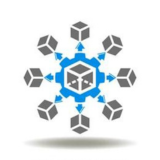Internet Of Things( IOT)
INTRODUTION
Internet of Things (IoT) refers to the network of interconnected devices embedded with sensors, actuators, and connectivity capabilities that enable them to collect, exchange, and act on data without human intervention.
Key Concepts
Sensors and Actuators
IoT devices are equipped with sensors to gather data from the environment (such as temperature, humidity, motion, and light) and actuators to perform actions based on that data (such as controlling lights, motors, and switches).
Connectivity
IoT devices are connected to the internet or local networks via various communication technologies such as Wi-Fi, Bluetooth, Zigbee, LoRaWAN, and cellular networks. This connectivity enables remote monitoring, control, and data exchange.
Security and Privacy
Security is a critical consideration in IoT deployments to protect against unauthorized access, data breaches, and cyber-attacks. This includes encryption, authentication, access control, and regular security updates.
Components of IoT
Advantages of IoT
Efficiency and Optimization
IoT enables real-time monitoring and control of processes, assets, and resources, leading to efficiency improvements, cost savings, and resource optimization.
Data-Driven Insights
IoT generates vast amounts of data that can be analyzed to gain actionable insights, improve decision-making, and drive innovation in various domains.
Automation and Autonomy
IoT systems can automate routine tasks, trigger actions based on predefined conditions, and enable autonomous operation of devices and processes.
Enhanced User Experience
IoT enhances user experience by providing personalized and context-aware services, improving convenience, comfort, and productivity.







